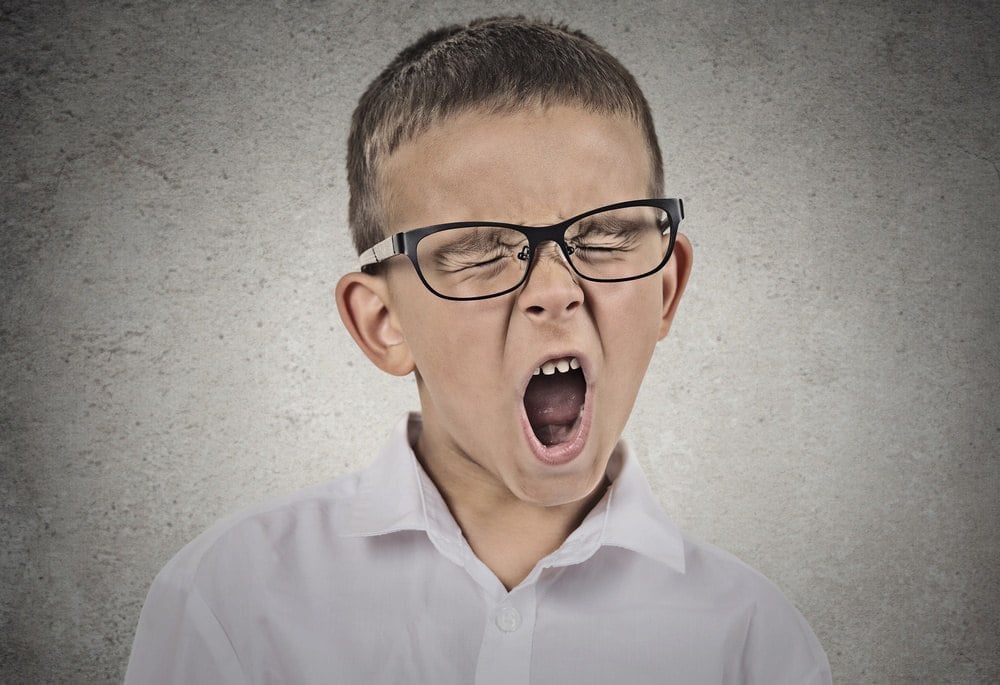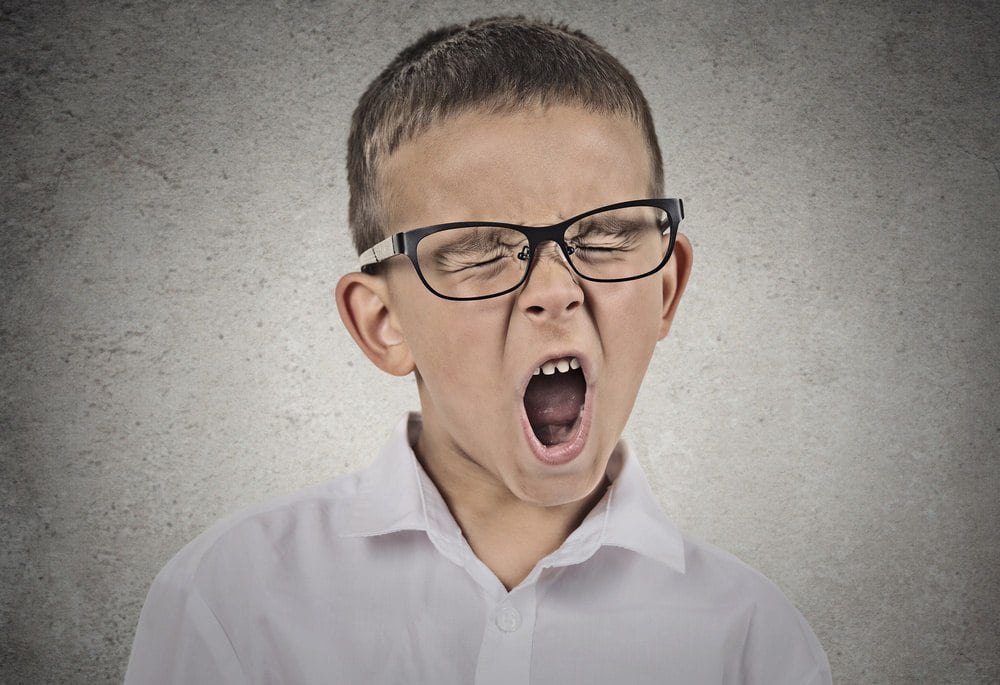ADHD and Children with Sleep Disordered Breathing (Sleep Apnea)
October 26th, 2017 | 5 min. read


Over the past 20 years, both parents and teachers in the U.S. have reported widespread levels of kids with impulsive behavior, trouble focusing and hyperactivity. Policymakers, scientists, and educators have all labeled attention deficit hyperactivity disorder (ADHD) as a nationwide crisis that led to them investing billions of dollars to look into its cause.
Some factors they've looked into are brain development, genetics, the push for early academics, exposure to lead, and more. But, what if it's not ADHD after all causing these behaviors in children? What if it's something more obvious such as sleep? As many researchers are now suggesting, it is possible that children these days are just not getting enough sleep — and this is leading to troubling behaviors that actually mimic ADHD.
Up to 50 percent of parents with kids who have ADHD report their kids suffering from some type of sleep problem, particularly trouble falling asleep and being able to stay asleep. These parent reports lead to the assumption children with ADHD are two to three times more likely to have problems with their sleep than those without ADHD.
ADHD and Sleep Problems: Is There a Relationship?
When children don't get adequate sleep, it may negatively affect how they function, think and behave. Additionally, kids who have sleep problems might show behaviors, symptoms or impairments that are peculiarly comparable to those of ADHD.
Sleep problems in kids, like sleep-disordered breathing (SDB), have been shown to:
- induce impulsivity.
- increase hyperactivity.
- spur problematic behavioral issues.
This hyperactivity and adverse behavioral issues could be a response to sleepiness during the day.
In fact, parents have said when their developing children don't get enough sleep, they display ADHD-like symptoms. To make things more confusing, some psychostimulant medications for treating ADHD might improve sleep in some patients, but cause sleep problems in others.
Children with sleep-disordered breathing can struggle with anything from loud, frequent snoring to OSA (obstructive sleep apnea). OSA is a condition that involves repeated events of airway blockage (partial or complete) during sleep.
Enlarged tonsils and adenoids are a common physical cause of a narrowing airway that contributes to SDB. Kids who are overweight have a higher risk for SDB since they have fat deposits around their throat and neck that also contribute to airway narrowing. Other factors that increase a child's risk of developing SDB are neuromuscular deficits, cerebral palsy or tongue or lower jaw abnormalities.
Many ADHD symptoms are similar to disordered or insufficient sleep symptoms. In children, sleep deprivation and ADHD symptoms can be indistinguishable.
Children often receive a diagnosis of ADHD after they exhibit a few or all of these behavioral symptoms:
-
Agitation
-
Impulsive behavior
-
Excitability
-
Difficulty paying attention
-
Lack of focus
-
Inability to sit still
-
Forgetfulness
-
Problems listening
-
Difficulty playing quietly
-
Difficulty waiting for one's turn
-
Tendency to interrupt
-
Difficulty sharing
-
Disorganization
-
Excessive talking
These behaviors, which are often linked to ADHD, interfere with the intellectual and social development of a child, which causes issues with their relationships with adults and peers at home and at school. But, what if it's not ADHD causing these symptoms?
In a large-scale study involving over 11,000 children, researchers found that younger kids who have experienced some type of SDB were 40 to 100 percent more likely to exhibit behavioral problems by the age of seven that mimic those doctors use to diagnose ADHD.
Consequences of Untreated Sleep Disordered Breathing in Children
Children with sleep-disordered breathing may experience:
-
Sleep deprivation: The child becomes inattentive, moody and disruptive at school and at home. There's a decrease in athletic and classroom performance and the child's overall happiness declines. They lack energy and would rather watch television than participate in activities.
-
Snoring: One of the classic symptoms in children with sleep apnea, snoring can be problematic if your child shares their bedroom with their sibling or engages in frequent sleepovers.
-
Growth: The child's growth hormone secretes during the night. Children with sleep-disordered breathing may have an interruption in hormone secretion which leads to slow development and growth.
-
Abnormal urine production: A child with SDB has an increase in nighttime urine production that could lead to bedwetting.
-
ADHD: Research shows SDB may cause ADHD.
Sleep apnea, one type of sleep-disordered breathing condition commonly found in children, is generally characterized by obstruction of nasal and oral passages during a person's sleep. Sleep apnea may cause dangerous 10 to 20-second breathing pauses, loud snoring, gasping or choking during sleep and other effects. When children have sleep apnea, it may lead to exhaustion, mood swings, irritability and other issues that aren't normally linked to a sleep disorder immediately.
And this might have led to an ADHD diagnosis. Many children have underdeveloped maxillae and underdeveloped mandible. This can result in the children having an oral structure abnormality, such as their jaws pushing back, closing their airway. Children with a closed airway aren't getting enough oxygen to allow them to breathe properly— similar to sleep apnea patients.
If your child has sleep apnea, they might act out at school because they're tired during the day from not getting the sleep they should be getting.
This confusion surrounding ADHD and sleep disorders could account for a substantial number of children ADHD cases and the medications they're taking to treat their symptoms could be aggravating the issue. While nobody is saying there is no such thing as ADHD, what they are saying is doctors should rule out sleep problems first.
What Can Be Done to Distinguish Between ADHD and Sleep Disorders?
There needs to be a better understanding and better treatment of kids showing symptoms of hyperactive, impulsive and inattentive behaviors by extensive questioning on SDB, sleepiness and problematic behaviors at exhibited at bedtime, in the night and when awake.
The relationship between ADHD and sleep in children is complicated and often overlooked by doctors. While adults usually become lethargic and sluggish when tired, children, on the other hand, tend to speed up to overcompensate for their lack of sleep.
Further, individually recognized or reported restless sleep needs specific attention to evaluate the presence of any of the following conditions as well:
-
Periodic limb movement disorder
-
Restless legs syndrome
Awakenings need to be questioned looking at:
-
Dyssomnias
-
Parasomnias
-
Sleep-disordered breathing
Sleep hygiene diaries or logs that detail both onset and offset of sleep quantitatively and qualitatively are also helpful.
If you notice your child sleeping in a position not normal for them or if they snore, they may have sleep apnea and could put your child at a greater risk of learning and behavioral problems. Around 10 to 20 percent of kids aged six through eight have sleep apnea. Almost 50 percent of children with sleep apnea are obese.
Clinicians should work with school professionals more closely to educate them of the possibility of SDB that could be contributing to problematic behaviors, especially ADHD-type behaviors and troubles with life care skills needed for success in school.
Not every kid with behavioral or academic issues will have sleep-disordered breathing, you should consider SDB if your child:
-
Snores on a regular basis.
-
Snores loudly.
-
Experiences behavior issues.
-
Displays mood problems.
-
Experiences school performance issues.
How to Get Your Child Evaluated for ADHD with Sleep-Disordered Breathing
If you notice any of these symptoms in your child, book an appointment at Houston ENT & Allergy for an evaluation. In many cases, doctors will diagnose SDB based on the child's physical exam and history. Other times, they may suggest a sleep test if they suspect the child has severe obstructive sleep apnea due to morbid obesity, craniofacial syndrome or neuromuscular disorder or if the child is younger than 3 years old.
The sleep test (polysomnography) tests for SDB. The sleep technologist attaches wires to your child's head and body so they can monitor your child's eye movement, brain waves, blood oxygen level, breathing and muscle tension. This isn't a painful test and sleep professionals perform it in the hospital or sleep clinic. In some cases, the sleep test can be performed at home. Normal or borderline sleep test results could still lead to a SDB diagnosis based on clinical evaluation and parental observations.
Sleep apnea treatment often helps eliminate behavioral problems and hyperactivity. Therefore, you should consult with your child's doctor if you have any suspicions of sleep apnea. Snoring, being unable to focus, and being overly tired are the most obvious signs, so, if you notice these symptoms in your child, contact us here at Houston ENT & Allergy.
Dr. Martin is double boarded in Otolaryngology as well as Sleep Medicine and the only otolaryngologist to be board certified in Sleep Medicine in Fort Bend County.
Topics:
